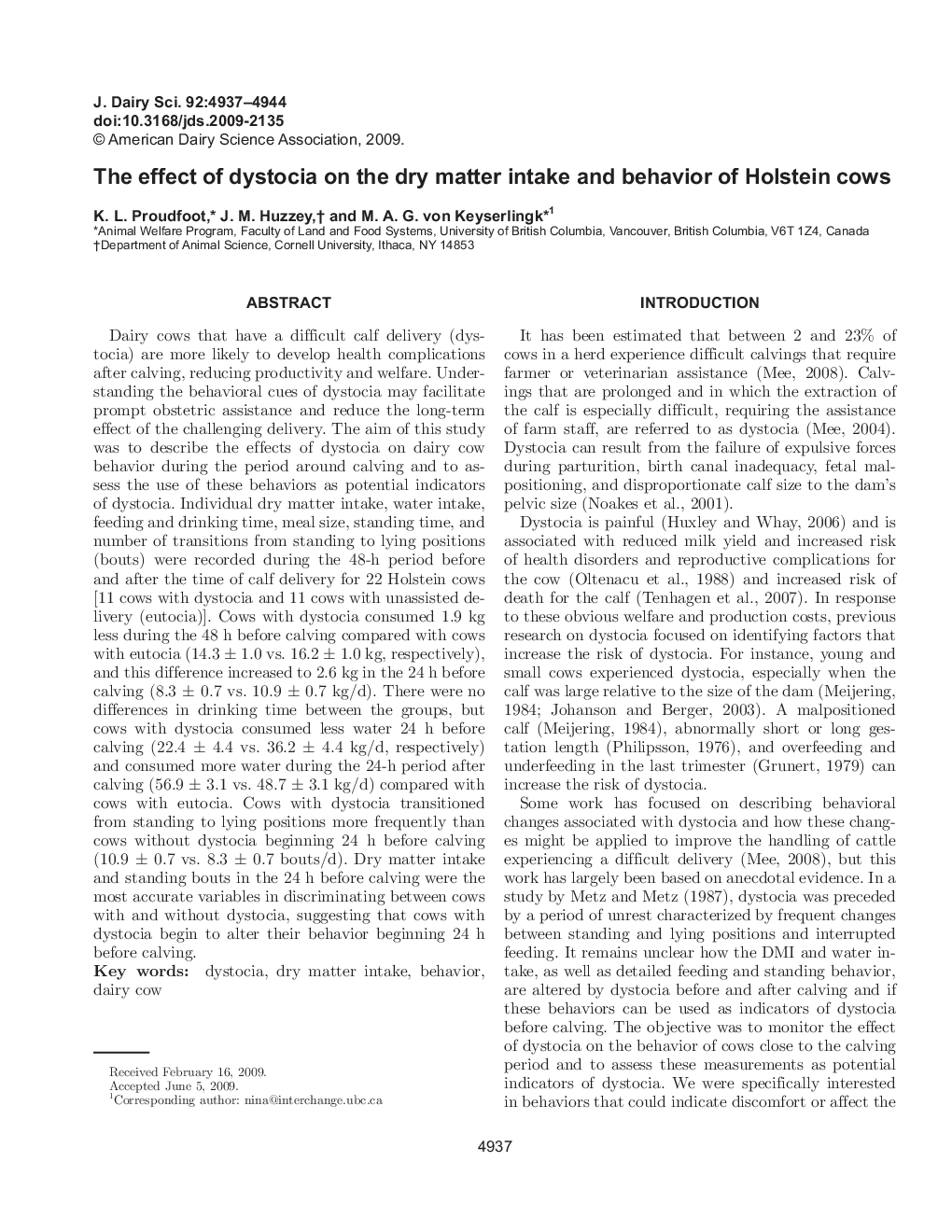| Article ID | Journal | Published Year | Pages | File Type |
|---|---|---|---|---|
| 2439345 | Journal of Dairy Science | 2009 | 8 Pages |
Abstract
Dairy cows that have a difficult calf delivery (dystocia) are more likely to develop health complications after calving, reducing productivity and welfare. Understanding the behavioral cues of dystocia may facilitate prompt obstetric assistance and reduce the long-term effect of the challenging delivery. The aim of this study was to describe the effects of dystocia on dairy cow behavior during the period around calving and to assess the use of these behaviors as potential indicators of dystocia. Individual dry matter intake, water intake, feeding and drinking time, meal size, standing time, and number of transitions from standing to lying positions (bouts) were recorded during the 48-h period before and after the time of calf delivery for 22 Holstein cows [11 cows with dystocia and 11 cows with unassisted delivery (eutocia)]. Cows with dystocia consumed 1.9 kg less during the 48 h before calving compared with cows with eutocia (14.3 ± 1.0 vs. 16.2 ± 1.0 kg, respectively), and this difference increased to 2.6 kg in the 24 h before calving (8.3 ± 0.7 vs. 10.9 ± 0.7 kg/d). There were no differences in drinking time between the groups, but cows with dystocia consumed less water 24 h before calving (22.4 ± 4.4 vs. 36.2 ± 4.4 kg/d, respectively) and consumed more water during the 24-h period after calving (56.9 ± 3.1 vs. 48.7 ± 3.1 kg/d) compared with cows with eutocia. Cows with dystocia transitioned from standing to lying positions more frequently than cows without dystocia beginning 24 h before calving (10.9 ± 0.7 vs. 8.3 ± 0.7 bouts/d). Dry matter intake and standing bouts in the 24 h before calving were the most accurate variables in discriminating between cows with and without dystocia, suggesting that cows with dystocia begin to alter their behavior beginning 24 h before calving.
Related Topics
Life Sciences
Agricultural and Biological Sciences
Animal Science and Zoology
Authors
K.L. Proudfoot, J.M. Huzzey, M.A.G. von Keyserlingk,
